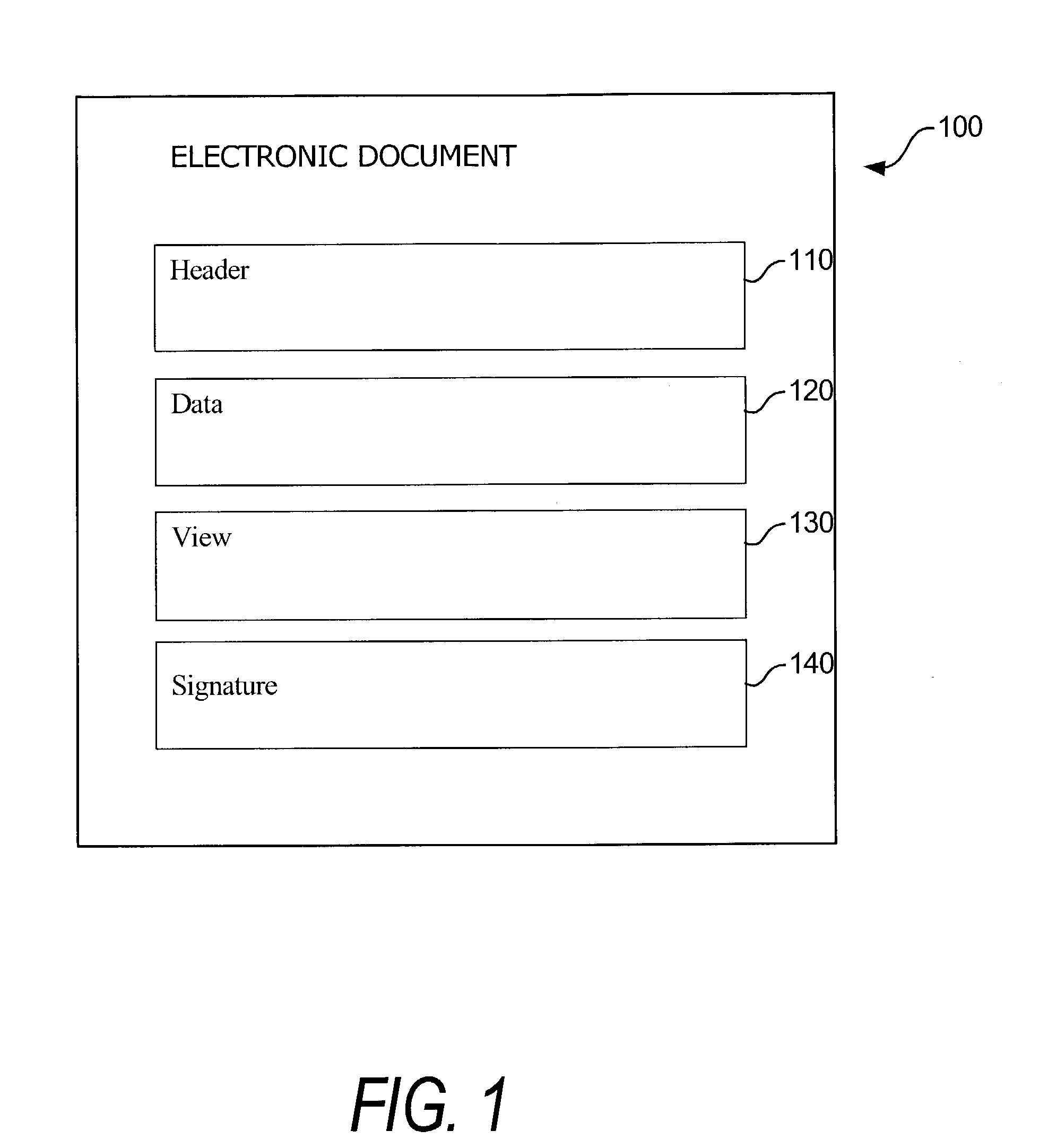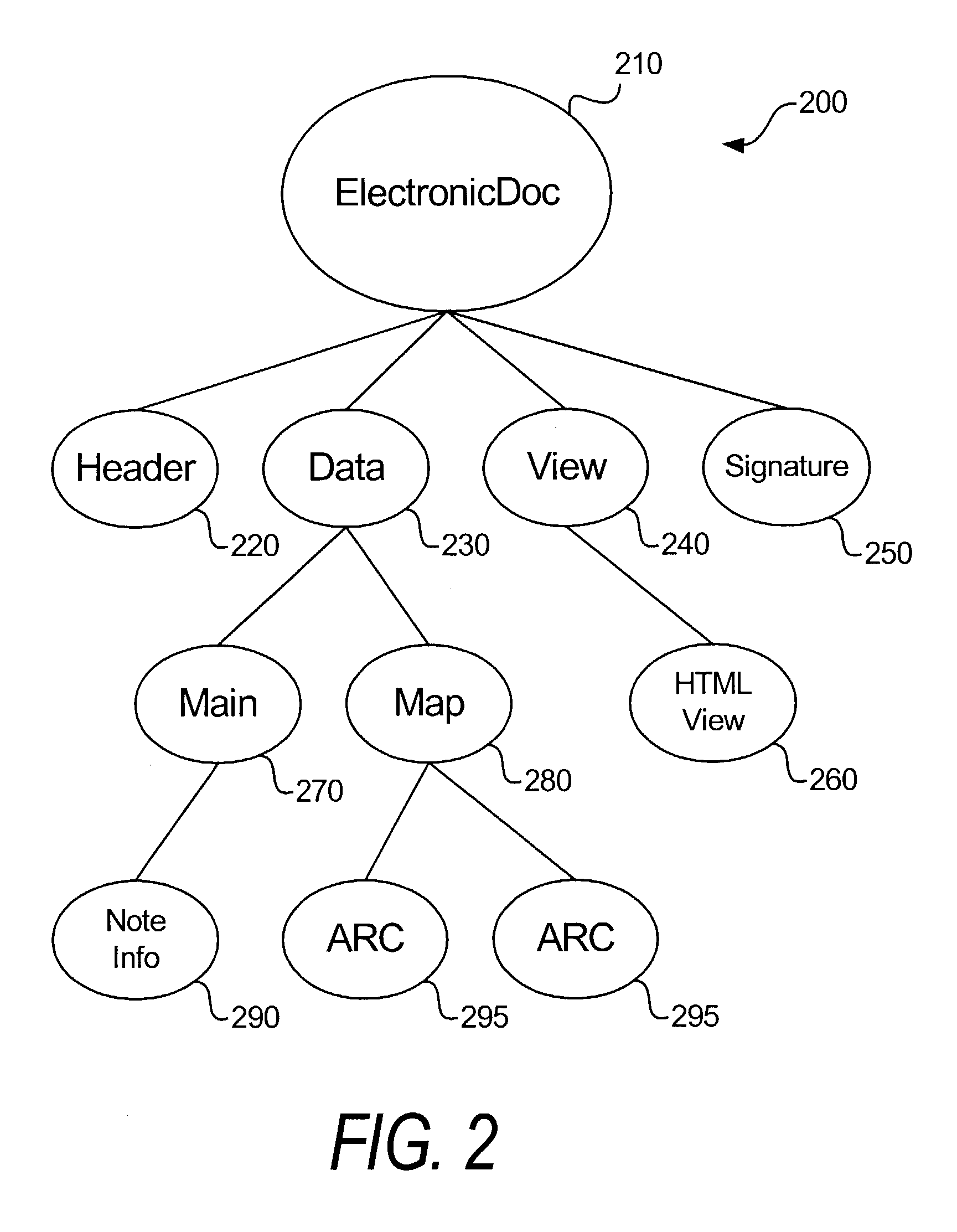Electronic document validation
a validation and electronic technology, applied in the field of electronic document validation, can solve the problems of unable to properly validate electronic documents, remain problematic in several respects, negating many benefits of electronic processing,
- Summary
- Abstract
- Description
- Claims
- Application Information
AI Technical Summary
Benefits of technology
Problems solved by technology
Method used
Image
Examples
Embodiment Construction
[0035]In the following description, for purposes of explanation, numerous details are set forth, such as flowcharts and system configurations, in order to provide an understanding of one or more embodiments of the present invention. However, it is and will be apparent to one skilled in the art that these specific details are not required in order to practice the present invention.
[0036]FIG. 1 is a block diagram illustrating an embodiment of an electronic document 100 in accordance with the present invention. The electronic document 100 has a modular configuration including a header section 110, a data section 120, a view section 130, and a signature section 140.
[0037]The electronic document 100 is preferably defined using a mark-up language, such as the one described further below. The electronic document 100 may be used in various systems, including a computer network, including but not limited to private networks, the Internet, a local area network, and others, and may be stored o...
PUM
 Login to View More
Login to View More Abstract
Description
Claims
Application Information
 Login to View More
Login to View More - R&D
- Intellectual Property
- Life Sciences
- Materials
- Tech Scout
- Unparalleled Data Quality
- Higher Quality Content
- 60% Fewer Hallucinations
Browse by: Latest US Patents, China's latest patents, Technical Efficacy Thesaurus, Application Domain, Technology Topic, Popular Technical Reports.
© 2025 PatSnap. All rights reserved.Legal|Privacy policy|Modern Slavery Act Transparency Statement|Sitemap|About US| Contact US: help@patsnap.com



